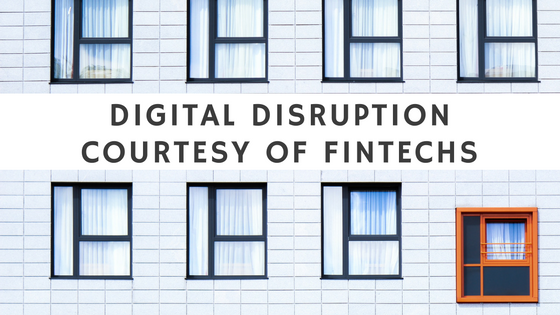Digital Disruption Courtesy of Fintechs
Blog: Kofax - Smart Process automation
Fintech organizations look at the financial landscape differently from a well-established bank that’s been around for ages.  Fintechs are focused on driving customer engagement and accomplish this through a three-pronged approach: social, technology and data. The goal of a fintech is not to be everything to everyone; they take a slice of the pie, drive technology, think about ways to make it “social” and provide relevant data.
Fintechs are focused on driving customer engagement and accomplish this through a three-pronged approach: social, technology and data. The goal of a fintech is not to be everything to everyone; they take a slice of the pie, drive technology, think about ways to make it “social” and provide relevant data.
Fintechs have transformed the typical offerings of banks and made them configurable. Banks offer products and services through a process; fintechs have shaken up the status quo, and created an environment in which the customer can be selective in what they want and enjoy an easier and simpler experience.
63% of CEO’s increased technology investment in 2015-Gartner
Click To Tweet
Of course, bank CEOs realize that fintechs are biting at their heels, and therefore, banks are making significant digital investments to ensure they are—at a minimum—able to keep up with competitors, while also providing a frictionless digital customer experience.
Citi recently published a report, “Digital Disruption—How FinTech is Forcing Banking to a Tipping Point,” which details how fintechs are competing with banks in an innovative manner and driving a better customer experience. The reality is that fintechs are all about the consumer: their experience and their engagement.
Fintech investments have grown exponentially—from $1.8 billion in 2010 to $19 billion in 2015. The majority of fintechs are focusing on personal/SME business segments where the target audience is digitally fluent. Digitally fluent does not refer to simply the millennial age group, or a certain generation or demographic, but to any customer who wants to digitally interact with your business. Increasingly, we are seeing this trend span generations.
Banks are clearly seeing fintechs slowly eating away at their business. The fintech approach is to take a slender segment of the bank’s business, and then focus on creating seamless technology workflows and a rich experience to delight the customer. Fintechs take a configurable and agile approach to deploying technology to get the desired results.
In this competitive environment, banks are taking a very serious look at the best methodology for driving digital innovation and transformation, and are therefore examining how they can partner with fintechs. Many big banks have created their own innovation labs; Citigroup’s Citi Ventures, for example, accelerates innovation at Citi through strategic focus on investing, piloting and commercializing new solutions in an effort to transform the future of financial services. San Francisco-based Wells Fargo has a start-up accelerator program, and Goldman Sachs has been a long-time investor in emerging tech companies.
Recently, Citi Venture agreed to invest in BluVine, an online provider of financing to small businesses. This strategic investment will support BluVine’s growth as it continues to scale its cloud-based offerings for small businesses and expand into new markets, while allowing Citi to accelerate their growth and increase scale in this market.
Ultimately, banks are looking at ways to stay competitive, provide technology to streamline customer interaction and, ultimately, delight the customer by offering a superior experience. Banks see that many fintechs are doing just that and are deciding to collaborate with them rather than fight against them. This collaborative approach between established banks and fintech firms is helping banks scale and increase top-line revenue growth.
However, banks should be wary about how this increase in partnerships could lead to a number of companies living under the “big bank” name that are disparate in their systems, approach and services. This situation could take banks back to the days of siloed divisions that don’t talk to each other and run almost like separate companies operating under the same company name. Integration is going to be key for banks collaborating with fintechs so as to ensure the rest of the organization can leverage the seamless technology and provide rich customer experiences.
Download your free copy of how to build your digital transformation strategy.
Leave a Comment
You must be logged in to post a comment.






